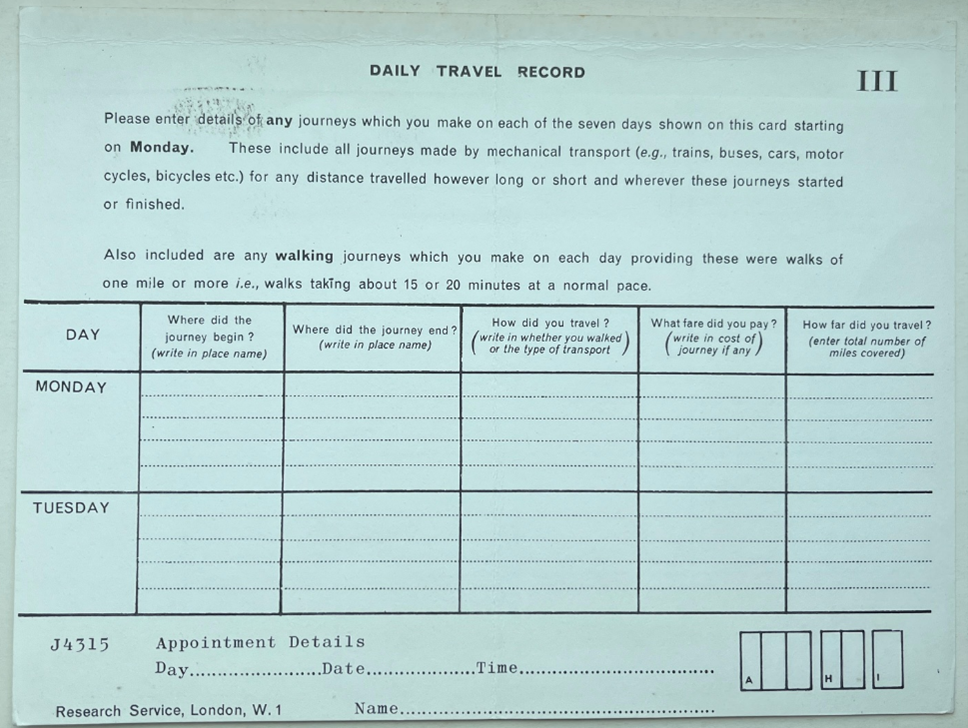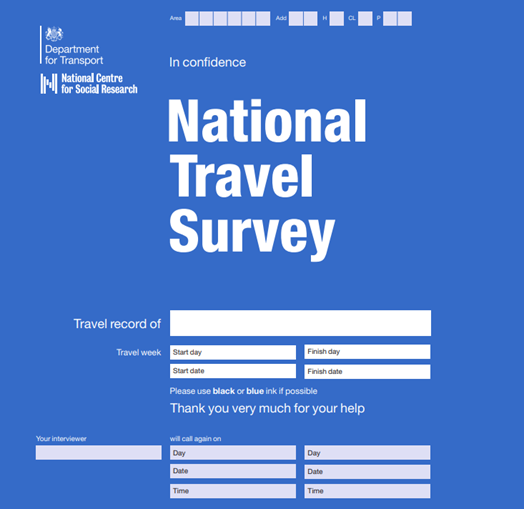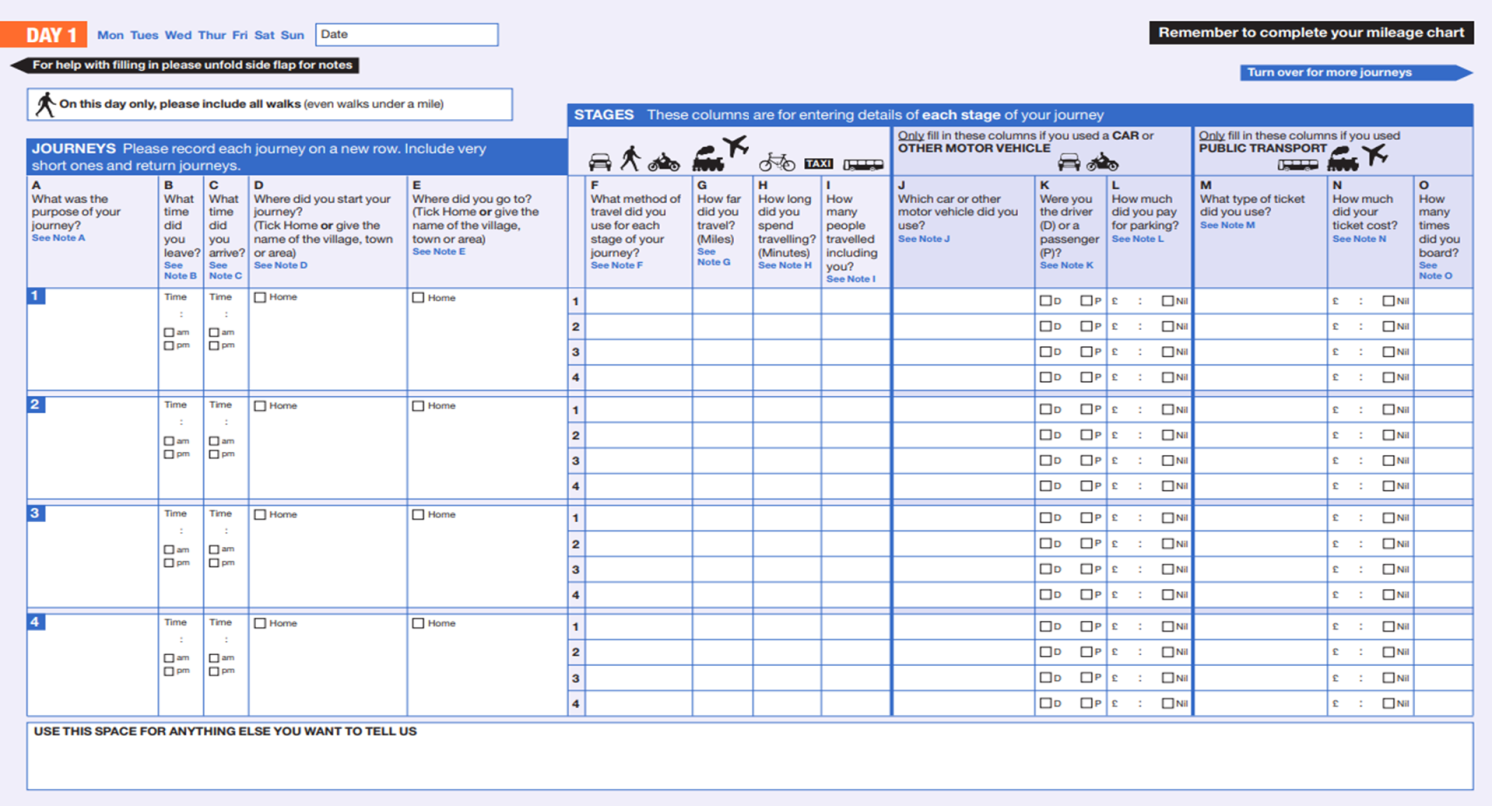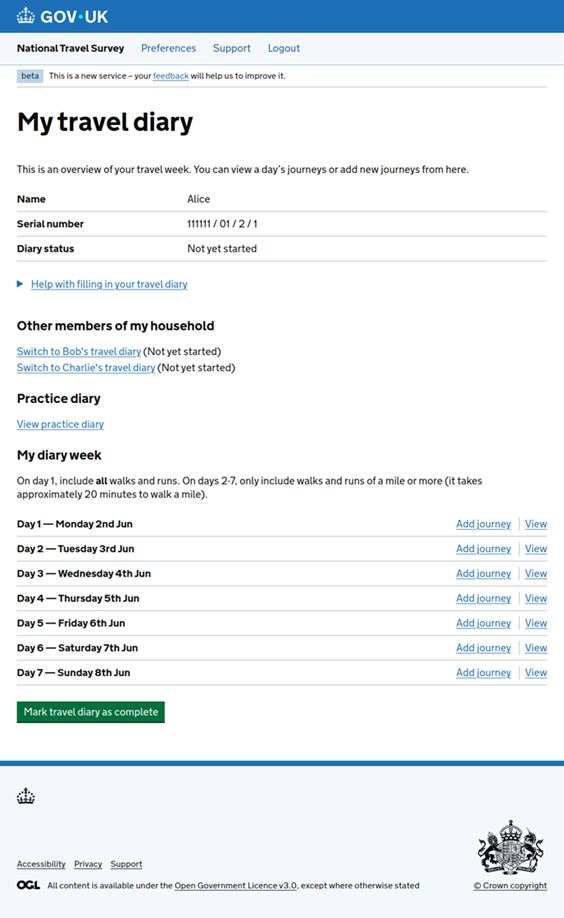Powering the future: Public attitudes towards green energy infrastructure in Britain


In 2025 the National Travel Survey (NTS) is celebrating 60 years of data collection on personal travel by residents of England. It is the primary source of data for monitoring long-term trends in personal travel and informing transport policies in England. Notably, it has been used to inform transport strategy at national level, including government policy on:
NTS is also used as a model for transport surveys both within and outside of the country.
The survey first began gathering data on travel behaviours in 1965, and to mark the 60th anniversary of its inception, we look at the history and development of the NTS, and how travel behaviours have changed over the past 60 years.
The NTS is a household survey, collecting information on personal travel within Britain. The first NTS was commissioned by the Ministry of Transport in 1965. It was the first national travel survey in the world and continues to be seen as the ‘gold standard’ of travel survey data collection. The survey was repeated a few times in the 1970s and 1980s, before it became continuous in 1988.
Since 2002, the NTS has been carried out by the National Centre for Social Research (NatCen), on behalf of the Department of Transport, as a continuous survey with fieldwork being carried out in every month of the year. The sample size has has increased substantially over the years – though in 2013 it was reduced to cover only England – with an issued sample size of approximately 35,000 addresses for 2025.

A notable feature of the NTS is that everyone in the household is interviewed, collecting information on key characteristics about the household, its individual members, and any vehicles they may use. At the end of the interview, each household member is asked to complete a 7-day, self-completed diary of their travel. This means it collects data on people of all ages, including children, and can explore how household dynamics impact on travel behaviour. NatCen brought in robust controls to ensure that travel behaviour is collected representatively across the year.
One of the key strengths of the survey is that data has been collected in a broadly comparable way since the first survey was carried out in 1965. Key concepts – such as how trips are defined and how the mode and purpose of journeys are categorised – are largely unchanged. This allows us to understand how travel behaviour has changed over a long period of time.
Equally, the survey has continually developed, adapting and changing in response to new technology and emerging survey methodologies, but retaining its core purpose and concepts that originated in the very first survey. For instance, the survey moved from paper data collection to Computer Assisted Personal Interviewing (CAPI) in 1994, introduced conditional incentives in 2003 and unconditional ones in 2004, and weighting of the data in 2005.


In the 60 years since the NTS was first introduced we have seen significant changes in car use, evidenced by car ownership and holding a driving license which have both risen hugely. Most people now hold a driving license and women are almost equally as likely to hold one as men.
To compare to our latest 2024 data, we looked back to the experimental data collected in 1964. Some things have not changed very much. The average weekly mileage of a private car was 121 miles in 1964. The weekly mileage of private cars then was 26%, higher on Saturdays than the average for Monday – Friday. This is surprisingly similar in 2024: the weekly mileage on average per car is 136 miles (after a rise in the 70s/80s, then a gradual drop in car mileage over the last 25 years), but now travel on mid-week days is very slightly higher than at weekends.
However, in 1964, 38% of households had the exclusive use of at least one private car. In 2024, 78% of households own at least one car – more than double what it was 60 years ago. This much higher number of cars shows why roads have become so much busier, despite the lack of change in mileage per car.
And driving habits have changed. In 1964, 33% of the population aged 16 years and over held driving licences; nearly 80% of these licences were held by men. Of the total non-licence holders, over 70% were women. Nowadays looking at our 2024 data, 75% of the population aged 17 years and over hold a full driving licence, and 48.5% of those who hold a driving licence are women.
As the survey moves into its seventh decade, it is important to ensure that the NTS adapts to new technologies and societal change, while retaining its core purpose and concepts.
In recent years, development work has focused particularly on the travel diary, which has been an integral and key component of the NTS since 1965. The travel diary collects various information about each person’s journeys, including where they travelled to, the purpose, distance, and mode of travel.
The travel diary has traditionally been filled-in on paper, with little change since the original in 1965. In 2018, work began to develop an online travel diary, with a rigorous design and testing process. Following a period of development and user-testing, a small-scale pilot was conducted in 2022, after which a series of adjustments were made, ahead of a large-scale parallel-run conducted in the first quarter of 2024 (results from this will be released in 2026 when the first digital diary data will be available).

Following this careful testing and development, the digital travel diary was launched as part of the mainstage NTS in 2025. Hosted on the GOV.UK website, respondents can now access their diary on-the-go and are able to quickly copy across journeys across days and across household members, greatly reducing respondent burden.
The data collected by the NTS provides a crucial insight into long-term travel behaviour and patterns and allows data users to identify seasonal patterns and changes in travel trends over time. It both shows how society has changed in the last 60 years, such as the enormous changes in car ownership and use, particularly among women – and how data collection has changed over time. It remains as important now as it did in 1965.
The data is widely used across the government to shape various policies concerned with both public and private transport. Tangible impacts of NTS data include government policy decisions on transport investment, reviews such as the Race Disparity Audit and tackling loneliness, on top of national and local travel strategy. NTS data is available on the UK Data Archive and is also used by academics and charities.
The NTS is considered the "gold standard" for travel surveys due to its longevity and quality of data collected through face-to-face interviewing and the self-completed travel diary. The NTS methodology has been adopted by other countries and local authorities as a benchmark for their own travel surveys. The survey has continually adapted to the changing world in which it exists, with the introduction of a digital travel diary the latest step. As the world adapts to emerging technologies, such as the increased use of Artificial Intelligence in every day life, it will be fascinating to see what a survey like the NTS looks like in the future.
You can read more from the latest NTS technical report here: and a previous comparison to 1965 data is here.

 Press release
Press release


Receive a regular update, sent directly to your inbox, with a summary of our current events, research, blogs and comment.
Subscribe